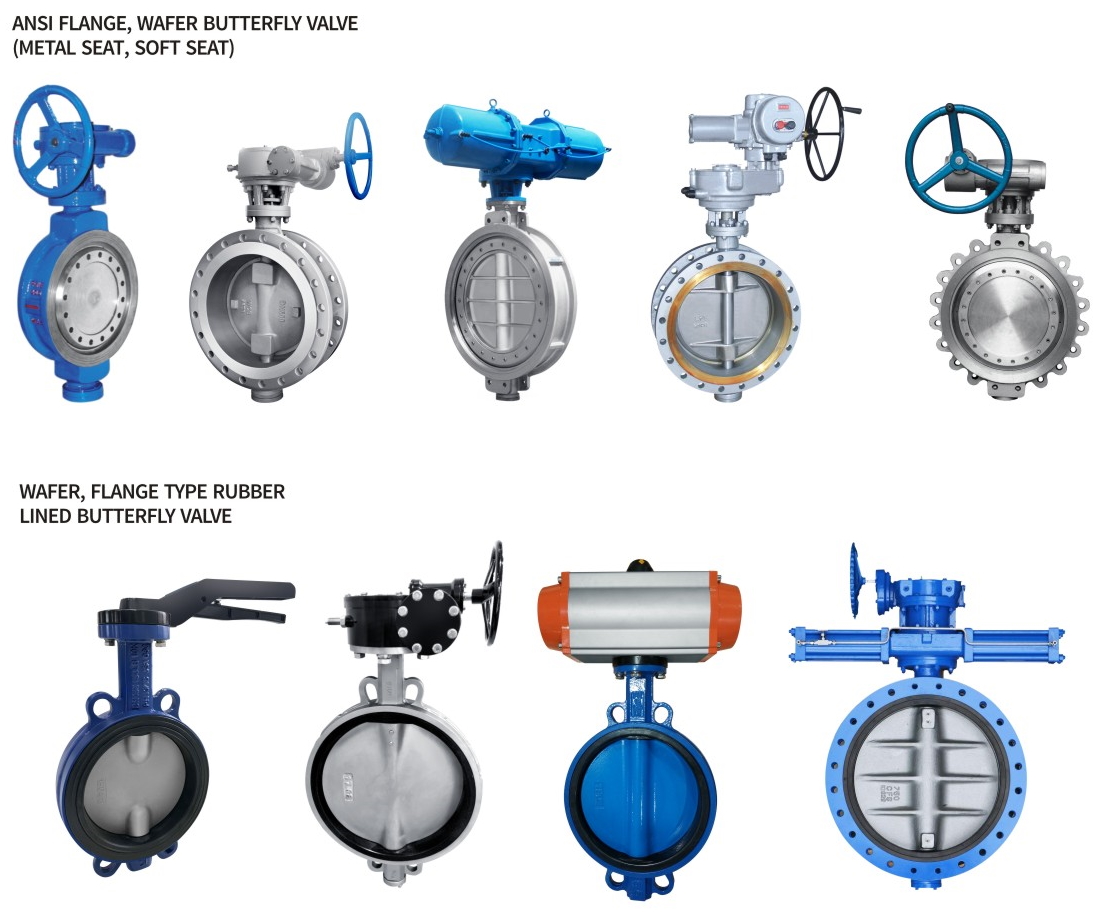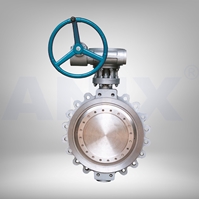Butterfly Valve
Available for made-to-order only

ANIX Butterfly valves manufactured and distributed by ANIX Valve USA are made of Stainless steel, Ductile iron, Cast iron or Carbon steel material which include concentric wafer butterfly valves, concentric lug butterfly valves, Flange butterfly valves, Rubber Lined Butterfly valves. Size range from 2" to 40". It comes with the options of DI disc, CF8 disc, CF8M disc, Lever unit, Gear box unit, Pin type and Pinless type.
Buttefly Valves
Butterfly valves are quarter-turn valves, turning 90 degrees. It’s a disk connected to a rod, and will open and close the directional flow when the rod rotates the disc. Butterfly valves are good for handling extensive amounts of fluid coming through and/or gases that have slurry particles in it. Butterfly valves have a lot of advantages compared to other valves. One advantage is it’s lightweight, small installation footprint, lower costs, quick operation and availability in large sizes. One of the reasons for this is because there aren't that many moving parts and also the fluid wouldn't be trapped inside since it has no holes for the fluid to get trapped in. Only problem is they are hard to clean due to their design.
Manual actuation is inexpensive and easy to operate. Usually for the manual there are 2 methods, a handwheel or gears. The handwheel is usually for small butterfly valves, and can only be partially open or closed, while gears are for bigger butterfly valves, but are slower when it comes to opening and closing the valve. They also can be self locking which means they can’t open unless someone opens it . They’re also automatic actuators. They have 3 different methods which are electric, pneumatic, and hydraulic. Electric actuators have an electric motor to open and close the valve. The pneumatic has a piston to open and close the valve, it uses compressed air to move it. The hydraulic pressure to move a piston, to open and close it.
Operation of butterfly valves
These butterfly valves belong to quarter turn valves. Here the term butterfly refers to the disc or plate inside the valve which is mounted on the rod. When this valve is closed, the disc will be turned in way to fully block the flow of liquid. When the valve is open, the disc will be swiveled to a quarter turn and thus in turn will allow the passage of liquid. The butterfly valve may also be opened gradually in order to control the flow of liquid.
Types of butterfly valves
There are usually many kinds of butterfly valves and each kind is designed to meet a particular pressure requirement or usage. The common types may include the resilient butterfly valve and high performance butterfly valve. The resilient butterfly valve has the lowest pressure rating and it uses the flexibility of the rubber materials. On the other hand, a high performance butterfly valve is used for high pressure systems. The advantage of these valves lies in the slight offset in the way of disc positioning. This helps to completely seal the passage way when the valve is closed and getting less possibility to damage. There are also some other butterfly valves like tricentric butterfly valves which are able to withstand large amounts of pressure.



